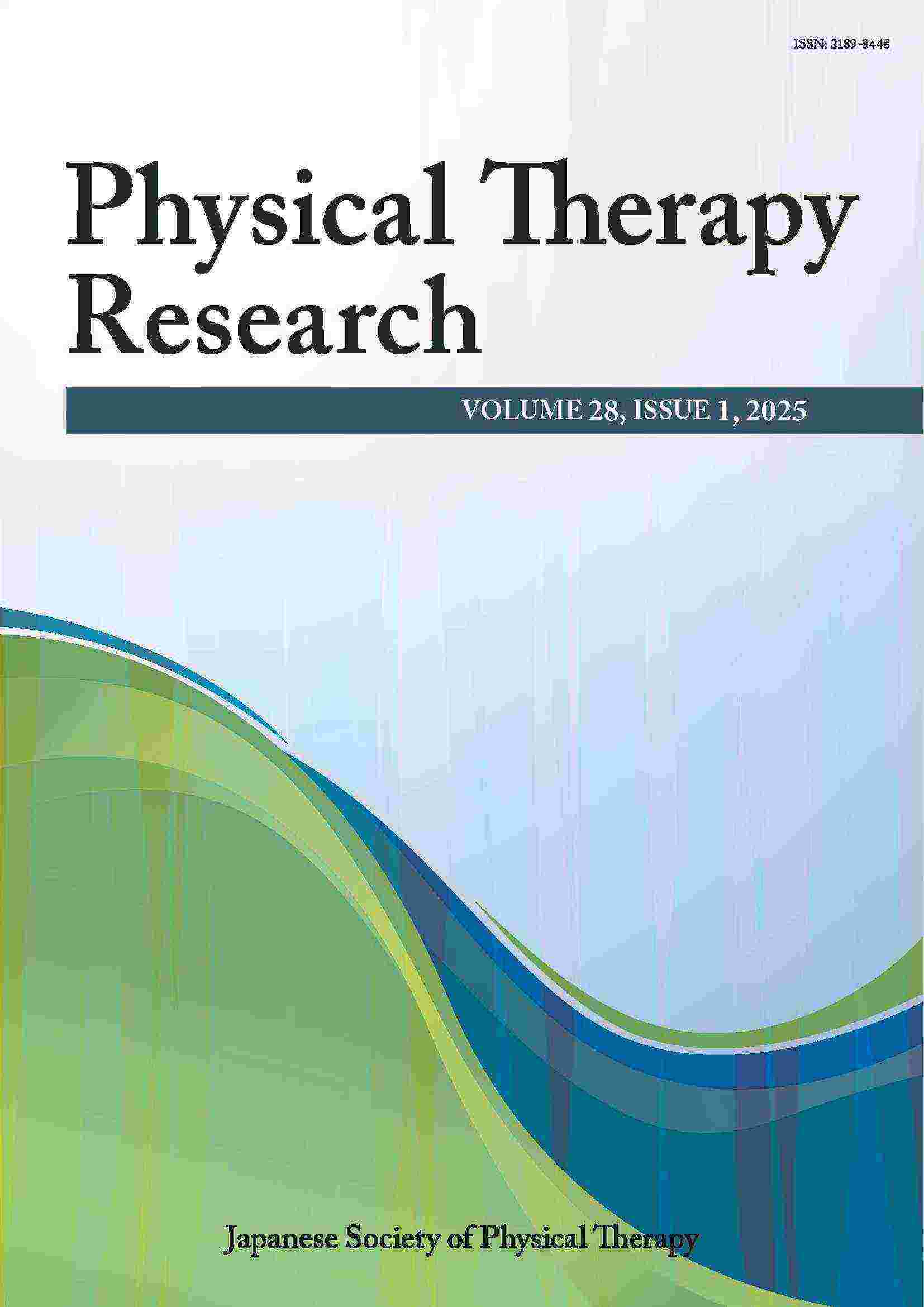バーチャルイシュー
最新号
選択された号の論文の11件中1~11を表示しています
- |<
- <
- 1
- >
- >|
Review
-
Modulating Cortico-cortical Networks with Transcranial Alternating Current Stimulation: A Minireview2025 年28 巻1 号 p. 1-8
発行日: 2025年
公開日: 2025/04/20
[早期公開] 公開日: 2025/03/10PDF形式でダウンロード (1362K) HTML形式で全画面表示 -
2025 年28 巻1 号 p. 9-13
発行日: 2025年
公開日: 2025/04/20
[早期公開] 公開日: 2025/03/13PDF形式でダウンロード (140K) HTML形式で全画面表示
Original Article
-
2025 年28 巻1 号 p. 14-21
発行日: 2025年
公開日: 2025/04/20
[早期公開] 公開日: 2024/12/24PDF形式でダウンロード (732K) HTML形式で全画面表示 -
2025 年28 巻1 号 p. 22-30
発行日: 2025年
公開日: 2025/04/20
[早期公開] 公開日: 2025/01/29PDF形式でダウンロード (247K) HTML形式で全画面表示 -
2025 年28 巻1 号 p. 31-36
発行日: 2025年
公開日: 2025/04/20
[早期公開] 公開日: 2025/03/13PDF形式でダウンロード (1298K) HTML形式で全画面表示 -
2025 年28 巻1 号 p. 37-44
発行日: 2025年
公開日: 2025/04/20
[早期公開] 公開日: 2025/03/13PDF形式でダウンロード (504K) HTML形式で全画面表示 -
2025 年28 巻1 号 p. 45-53
発行日: 2025年
公開日: 2025/04/20
[早期公開] 公開日: 2025/03/10PDF形式でダウンロード (313K) HTML形式で全画面表示 -
2025 年28 巻1 号 p. 54-60
発行日: 2025年
公開日: 2025/04/20
[早期公開] 公開日: 2025/03/10PDF形式でダウンロード (1067K) HTML形式で全画面表示 -
2025 年28 巻1 号 p. 61-67
発行日: 2025年
公開日: 2025/04/20
[早期公開] 公開日: 2025/03/13PDF形式でダウンロード (346K) HTML形式で全画面表示
Systematic Review
-
2025 年28 巻1 号 p. 68-75
発行日: 2025年
公開日: 2025/04/20
[早期公開] 公開日: 2025/03/15PDF形式でダウンロード (863K) HTML形式で全画面表示
Editorial Board
-
2025 年28 巻1 号 p. e1
発行日: 2025年
公開日: 2025/04/20
PDF形式でダウンロード (416K)
- |<
- <
- 1
- >
- >|
